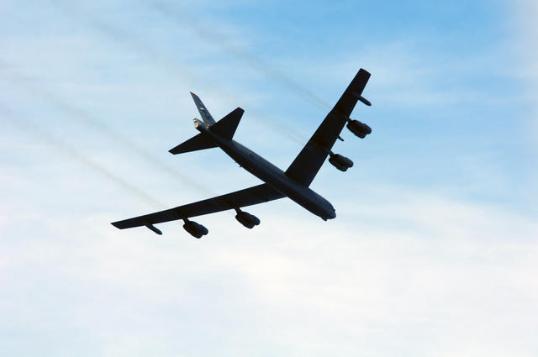You know how when your jalopy out in the driveway starts getting old and the transmission goes? Before deciding to spend a coupla grand to fix it, you and your significant other sit around the kitchen table and ask: hey, is it really worth pouring all that money into the old heap?
The U.S. Air Force just sat around its kitchen table and concluded its fleet of 75 B-52 bombers — first bought during the Eisenhower Administration — needs the equivalent of a new transmission. Cost? Twelve billion — that’s B as in Boeing — dollars over the next eight years.
“This is a contracting vehicle that will allow engineering sustaining contracts, studies, production and other activities to occur in support of the B-52,” Boeing — that’s B as in Billion — says. While it won’t pay for new transmissions, it will pay for stuff like Evolutionary Data Link Phase III kits, Combat Networks Communication Technology work, Extremely High Frequency engineering development and production, Strategic Radar Replacement development and production, Tactical Data Link engineering studies, and Internal Weapons Bay production. That’s definitely $12 billion worth of words right there.
The need for retooling a half-century old bomber — given our cruise missiles, B-1s, B-2s, assorted other warplanes, and the fact that new GPS-guided bombs can turn a FedEx 747 cargo plane into a heavy bomber — is a topic for another day. So is the likely list of targets — nations dangerous enough to require tons of bombs, but backward enough to lack good air defenses, and stupid enough to locate key targets where we can find them.
Such quibbles aside, the planned work is designed to keep the Stratofortresses flying until 2040 (that’s the B-52’s official name, but the airmen who keep it flying affectionately call it BUFF — for Big Ugly Fat…Fellow). That’s 95 years after the Air Force detailed the idea that became the B-52 when it declared it was seeking a new bomber “capable of carrying out the strategic mission without dependence upon advanced and intermediate bases controlled by other countries.” The cost of the upgrades works out to roughly $150 million per plane — planes that cost about $10 million each when new.



